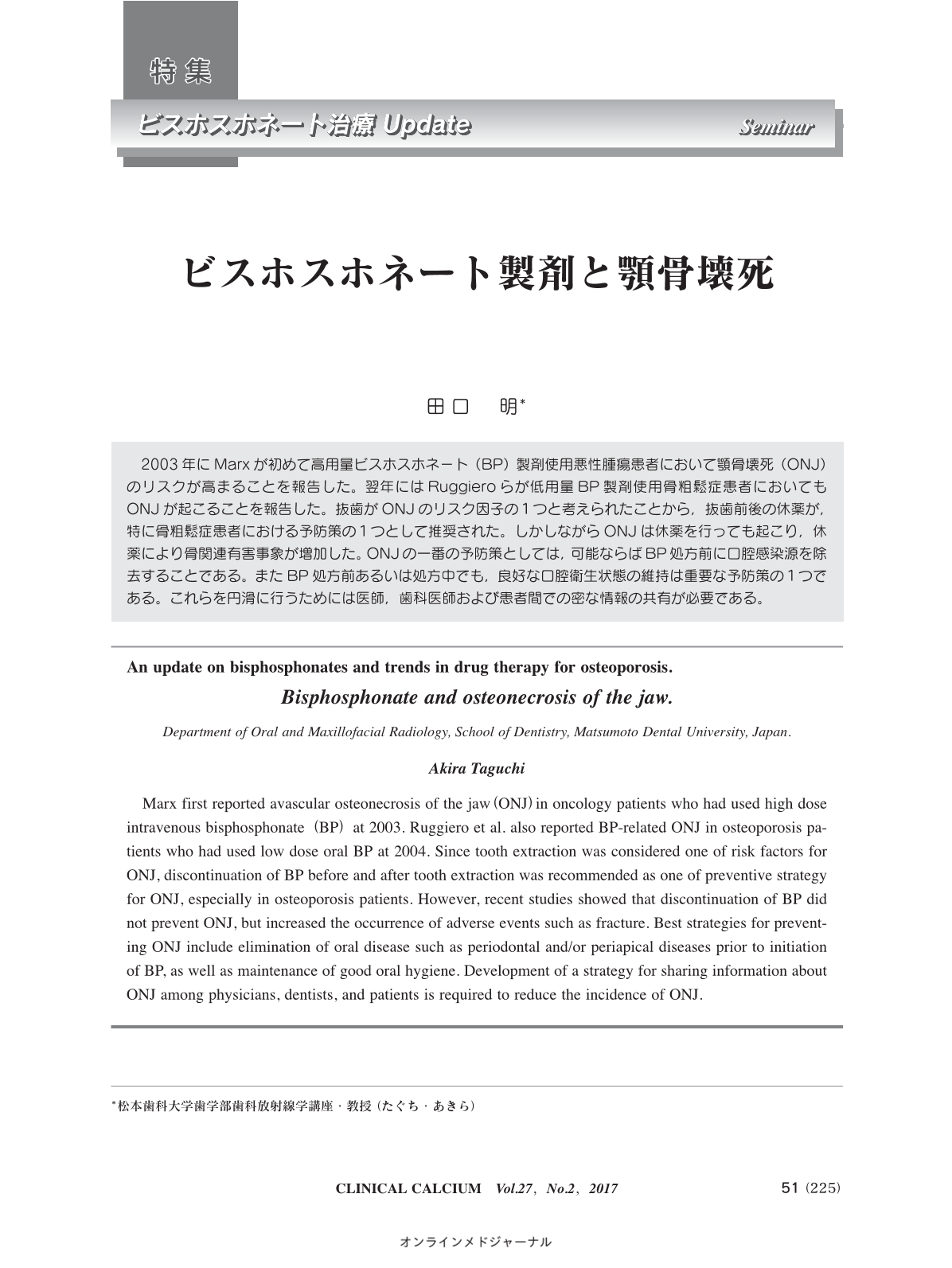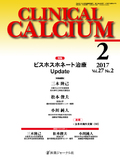Japanese
English
- 有料閲覧
- Abstract 文献概要
- 1ページ目 Look Inside
- 参考文献 Reference
2003年にMarxが初めて高用量ビスホスホネート(BP)製剤使用悪性腫瘍患者において顎骨壊死(ONJ)のリスクが高まることを報告した。翌年にはRuggieroらが低用量BP製剤使用骨粗鬆症患者においてもONJが起こることを報告した。抜歯がONJのリスク因子の1つと考えられたことから,抜歯前後の休薬が,特に骨粗鬆症患者における予防策の1つとして推奨された。しかしながらONJは休薬を行っても起こり,休薬により骨関連有害事象が増加した。ONJの一番の予防策としては,可能ならばBP処方前に口腔感染源を除去することである。またBP処方前あるいは処方中でも,良好な口腔衛生状態の維持は重要な予防策の1つである。これらを円滑に行うためには医師,歯科医師および患者間での密な情報の共有が必要である。
Marx first reported avascular osteonecrosis of the jaw(ONJ)in oncology patients who had used high dose intravenous bisphosphonate(BP)at 2003. Ruggiero et al. also reported BP-related ONJ in osteoporosis patients who had used low dose oral BP at 2004. Since tooth extraction was considered one of risk factors for ONJ, discontinuation of BP before and after tooth extraction was recommended as one of preventive strategy for ONJ, especially in osteoporosis patients. However, recent studies showed that discontinuation of BP did not prevent ONJ, but increased the occurrence of adverse events such as fracture. Best strategies for preventing ONJ include elimination of oral disease such as periodontal and/or periapical diseases prior to initiation of BP, as well as maintenance of good oral hygiene. Development of a strategy for sharing information about ONJ among physicians, dentists, and patients is required to reduce the incidence of ONJ.



